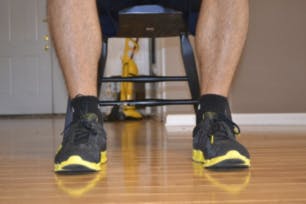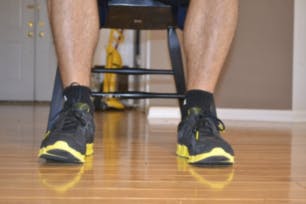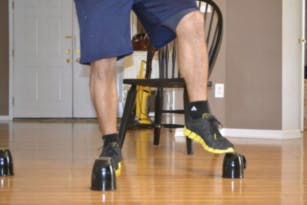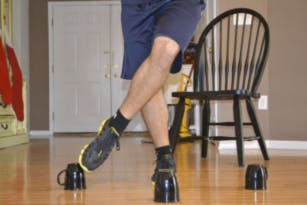By: Dr. Richard DeFalco, DPT, OCS, CSCS, CWcHP, Cert. DN
With the start of basketball season upon us it is a good time to provide some insight on ankle sprains and strategies to offset them. Most basketball injuries occur in the legs, and even more so in the foot and ankle. This is in part due to the constant starting/stopping motions, acceleration and deceleration of the body, moving in multiple planes, and moving within traffic "in the paint."
Most ankle sprains are lateral ankle sprains, meaning they occur on the outside aspect of the ankle, and occur as a result of "rolling on the ankle" or "turning the foot in." They are identified based on their severity by grading. Grade I (mild), grade II (moderate), and grade III (severe). A more severe sprain correlates with an increased number of ligaments involved as well as more profound tearing of these ligaments. As a good rule of thumb, if you sustain any degree of ankle sprain, immediately rest, ice, compress, and elevate for the first 2-3 days and then seek proper medical attention.
Though more importantly is what to do after you're healed or even better as a means of prevention. Reoccurrence rates of ankle sprains have been reported as high as 50%. This is because there is delayed muscle activation as well as impaired proprioception (the ability for you to determine subtle positional changes in the foot and ankle) after sustaining an ankle sprain. This leads to functional ankle instability and a repeated history of insecurity and giving way of the ankle.
There are strategies to be implemented to offset and rehabilitate ankle injuries. They include strengthening of the entire foot and ankle, with an emphasis on the muscles that run along the outer aspect of the lower leg and ankle. Proprioceptive training utilizing different balancing strategies that emphasize both preparing to move and reacting to move. There is also a substantial amount of research, primarily in athletes, that demonstrates that strengthening of specific hip muscles has been proven to decrease the reoccurrence of ankle sprains. If you or anyone you know suffers from chronic ankle sprains or instability, use the following exercise strategies as a stepping stone to offset future injuries. Visit www.prsrehabservices.com for the full article and illustrations of corrective exercises for lateral ankle sprains.
Exercise 1: Ankle Eversion
Begin with the foot flat on the floor (Figure 1). Then attempt to contract the muscles on the outside aspect of your lower leg (Figure 2), to lift the outside border of your foot off of the floor (Figure 3). Do this without moving your knee or hip. Repeat 3x20.
 Figure 1
Figure 1 Figure 2
Figure 2 Figure 3
Figure 3
Exercise 2: Stability Exercise
Begin by standing on the affected leg (right foot in picture-Figure 1). Place three objects on the floor (to the right and left of your body, as well as directly in front). Then proceed by attempting to gently touch the object with the uninjured leg and return to the starting position. Alternate left, middle, right, and repeat (Figures 2-4). Perform for one minute and repeat five times. The key to success is controlled movement. Use plastic solo cups instead of coffee mugs. If you crush the cup, then you are putting too much pressure through the leg and you are not in control of the movement.
 Figure 1
Figure 1 Figure 2
Figure 2 Figure 3
Figure 3 Figure 4
Figure 4
Dr. Richard DeFalco is a physical therapist with Professional Rehabilitation Services in Myrtle Beach. He is a Board Certified Orthopedic Specialist as well as a Certified Strength and Conditioning Specialist. He treats patients of all ages and activity levels that suffer with neuromusculoskeletal disorders. For more information on this topic and other related conditions, you can contact Dr.Richard DeFalco (843) 839-1300.
